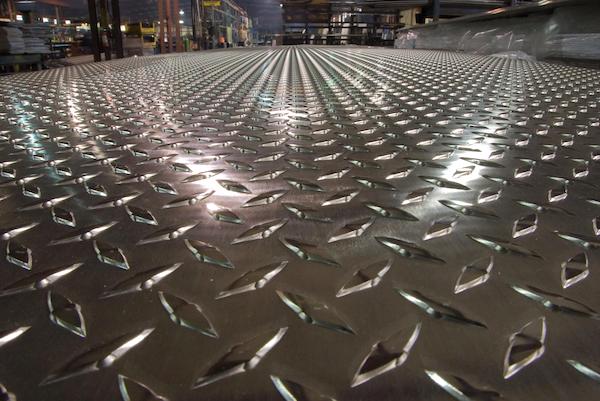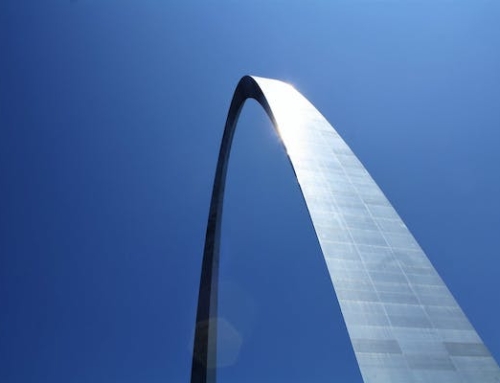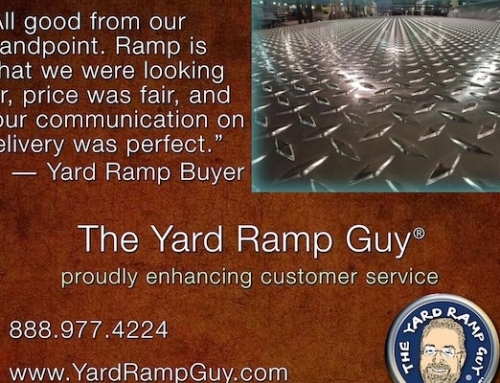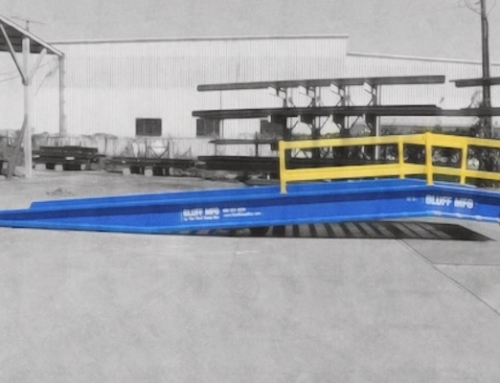Believe it or Not: Steel from Powder
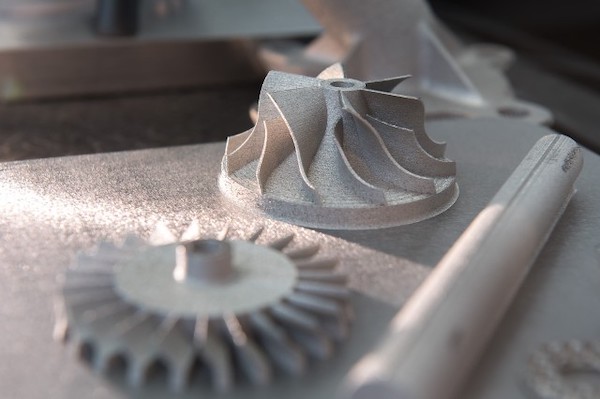
As we’ve highlighted before, a number of our quality yard ramps⏤with common variations⏤have industry-standard specs: 20,000-pound capacity, 84-inch width, and 36-foot length, with a weight of some 6,000 pounds.
(While we’re at it, special orders don’t upset us. We’re always happy to discuss your requirements for a Custom Solution.)
Six thousand pounds. When someone tells you our inventory weighs a ton, well, just triple that.
Along comes technology to provide industry disruption. This is from the U.S. Army Research Laboratory Public Affairs office:
“Army researchers are looking at new technologies to create steel alloy parts from powder using a laser…The researchers are using an alloy originally developed by the U.S. Air Force. The Army adapted the metal, called AF96, to powder form. Using a method called Powder Bed Fusion, the 3-D printer’s laser selectively melts the powder in a pattern. The printer then coats the build plate with another layer of powder and the process is repeated until the part is complete.”
First applications appeared designed to repair or replace, say, a tank part. No waiting for inventory to arrive from some distant distribution center. Here we can picture a section of the base set aside for a 3-D printing of the required replacement part, which is the swapped into the tank.
3D Insider tells us that, in 2014, a quality 3D printer cost more than $2,000. Today, that price is under $1,000. The average cost: $700. The cheapest: about $200. We mention this to show that, as consumers take to a product, the price often tends to drop. (Seen the prices of flatscreen televisions recently? They’ve dropped dramatically in recent years.)
At the same time, the technology improves. The machines grow more streamlined, easier to operate, and faster in completing production of the item.
Dr. Brandon McWilliams, in the Army’s manufacturing science and technology lab, said, “Additive manufacturing is going to have a huge impact on sustainment…You can really reduce your logistics footprint. Instead of worrying about carrying a whole truckload…of spares, as long as you have raw materials and a printer, you can potentially make anything you need.”
No doubt there are companies in the civilian sector looking for ways to take advantage of this new technology. And with that comes its possible effect on our industry and a multitude of others.
If a company were able to in-house manufacture a large piece of machinery, then the steel industry, the broker industry, the transportation industry, and the wholesale industry would all be negatively impacted. We know the possibilities and the eventual realities by looking at other business sectors. For example, 2017 saw more people take rides in an Uber than in yellow cabs in New York City.
All of which is to say that if a company can “print” its own yard ramp some day…well, we can’t predict the future.
Though we’re certainly prepared to adapt to it. Sort of.

Click HERE to live part of McCoy’s life.

